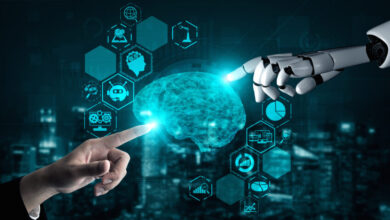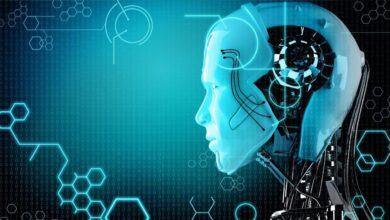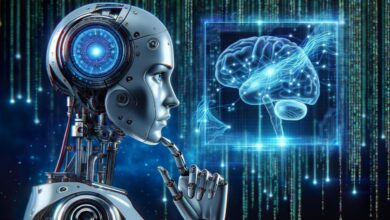How Machines Learn: Algorithms Made Simple
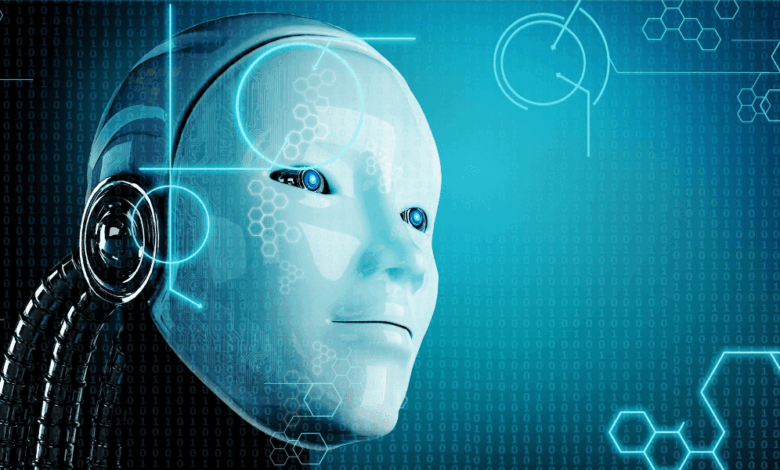
The digital world we inhabit today is overwhelmingly powered by Machine Learning (ML), a core subset of Artificial Intelligence where algorithms, rather than humans, determine the operational logic by learning directly from vast amounts of data.
From the personalized recommendations that curate your entertainment to the sophisticated fraud detection systems that secure your banking, ML algorithms are the silent engines driving innovation across virtually every industry, fundamentally changing how we interact with technology.
Unlike traditional programming, which requires explicit, step-by-step instructions for every possible scenario, machine learning provides the computer with data and allows it to “teach itself” the underlying patterns and relationships necessary to make intelligent predictions or classifications.
This ability to generalize from past experience to unseen situations is what makes ML so transformative, enabling systems to adapt and improve performance over time without needing constant manual updates from programmers.
If data is the fuel for this revolution, then the algorithms are the high-performance engines, defining the specific set of mathematical rules and procedures used to process that data and extract meaningful knowledge.
Understanding the diverse types of machine learning algorithms—the core methodologies that allow machines to learn—is the foundational step toward grasping the mechanics of modern AI and appreciating its immense potential to solve complex real-world problems.
This guide will take a detailed, yet easy-to-digest, tour through the major algorithmic families, explaining their distinct roles, key algorithms, and transformative applications in the digital age.
The Three Pillars of Machine Learning
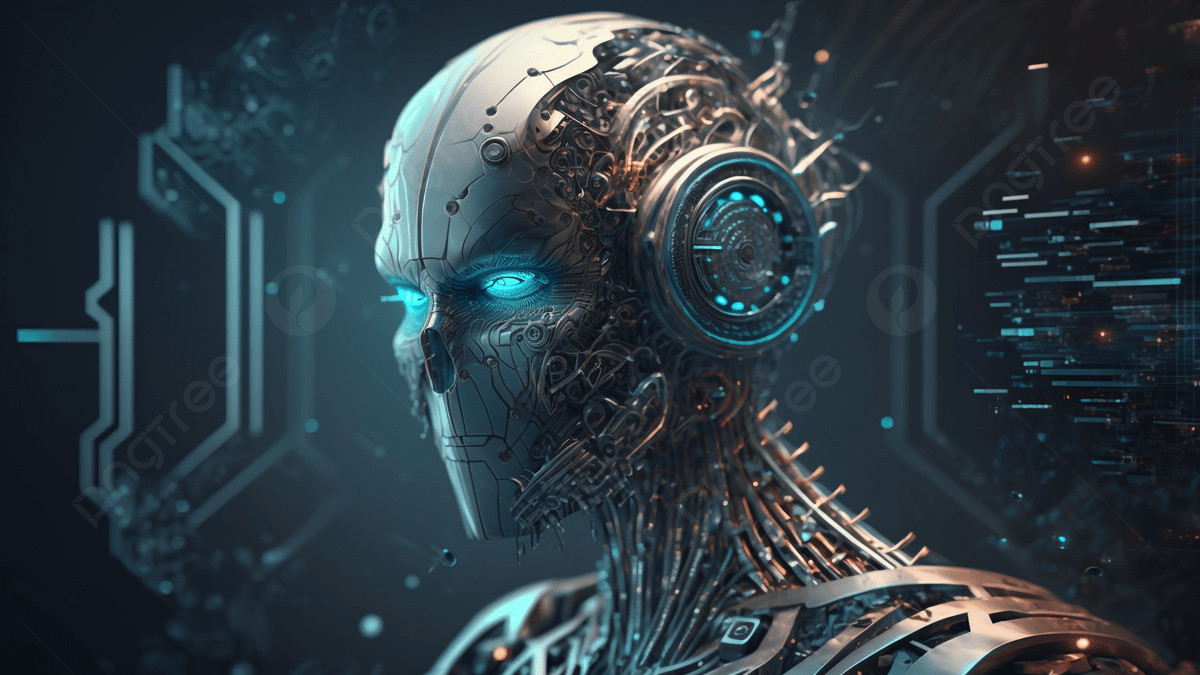
Machine learning algorithms are primarily categorized based on the type of data they receive and the problem they are designed to solve. These three major learning paradigms—Supervised, Unsupervised, and Reinforcement Learning—form the foundation of almost all modern AI systems.
1. Supervised Learning: Learning with a Teacher
Supervised Learning is the most common form of machine learning and is analogous to a student learning under the guidance of a teacher. The algorithm is trained on a labeled dataset, meaning the input data already has the correct output, or “answer,” associated with it.
A. The Core Concept
- The model learns a mapping function from the input variables (X) to the output variable (Y).
- It repeatedly compares its predictions with the known correct labels and adjusts its internal parameters to minimize the errors.
- This process continues until the model can accurately predict the output for new, unseen input data.
B. Types of Supervised Tasks
- Classification: Used when the output variable is a discrete category or class.
- Regression: Used when the output variable is a continuous numerical value.
C. Essential Supervised Algorithms
- Linear Regression: A simple, foundational algorithm used for predicting a continuous numerical value by finding the best-fitting straight line that describes the relationship between input and output variables.
- Logistic Regression: Despite its name, this is primarily a classification algorithm used for predicting binary outcomes (e.g., Yes/No, Spam/Not Spam) by estimating probabilities.
- Decision Trees: A flexible, easy-to-interpret model that uses a tree-like graph of decisions and their possible consequences to determine the final output.
- Support Vector Machines (SVM): This algorithm is powerful for classification and regression, working by finding the optimal hyperplane that best separates different classes in a high-dimensional space.
- K-Nearest Neighbors (k-NN): A simple, non-parametric algorithm that classifies a new data point based on the majority class of its k closest data points in the feature space.
- Random Forest: An ensemble method that builds multiple decision trees during training and then combines their predictions to produce a single, highly accurate result, often mitigating the risk of overfitting.
D. Real-World Applications
- Spam Detection: Classifying an email as “Spam” or “Not Spam.”
- House Price Prediction: Forecasting the continuous numerical value of a home based on its size, location, and age.
- Medical Diagnosis: Classifying a tumor as “Malignant” or “Benign” based on patient data and imaging results.
2. Unsupervised Learning: Learning through Exploration
Unsupervised Learning is the opposite of supervised learning; here, the algorithm is given unlabeled data—a raw dataset with no predefined answers or correct outputs. The goal is for the machine to explore the data independently and discover hidden structures, patterns, or groupings within it.
A. The Core Concept
- The algorithm attempts to infer the underlying patterns in the dataset without any guidance or feedback.
- It is primarily an exploratory phase, seeking to find intrinsic structures that help organize and interpret the information.
- This is often used when the structure of the data is unknown, or when manually labeling the entire dataset would be prohibitively time-consuming or expensive.
B. Types of Unsupervised Tasks
- Clustering: Grouping similar data points together into distinct clusters or segments based on their inherent characteristics.
- Dimensionality Reduction: Reducing the number of variables (features) in the dataset while retaining most of the critical information, simplifying the data for visualization and faster processing.
- Association Rule Mining: Discovering interesting relationships between variables in large databases, often used for market basket analysis.
C. Essential Unsupervised Algorithms
- K-Means Clustering: A centroid-based algorithm that partitions the data into K distinct clusters, where K is a number specified by the user, by iteratively assigning data points to the nearest cluster centroid.
- Hierarchical Clustering: Builds a hierarchy of clusters, either by starting with all data points as separate clusters and merging them (agglomerative) or starting with one large cluster and splitting it (divisive).
- Principal Component Analysis (PCA): A fundamental technique for dimensionality reduction that transforms the data by projecting it onto a new set of orthogonal axes, capturing the maximum variance in the data with fewer dimensions.
- DBSCAN (Density-Based Spatial Clustering of Applications with Noise): An algorithm that groups together data points that are closely packed together, marking as outliers points that lie alone in low-density regions.
D. Real-World Applications
- Customer Segmentation: Grouping customers into segments (e.g., “High Spenders,” “Budget Shoppers”) based on their purchasing behavior for targeted marketing.
- Anomaly Detection: Identifying unusual or abnormal data points, such as fraudulent transactions or defective parts on a manufacturing line.
- Image Compression: Reducing the complexity of an image’s color data while preserving its visual quality using clustering techniques.
3. Reinforcement Learning: Learning through Trial and Error
Reinforcement Learning (RL) is a distinct paradigm where an Agent learns to make sequential decisions by interacting with a dynamic Environment. It’s fundamentally different from the other two because it doesn’t use static data; it learns through trial and error.
A. The Core Concept
The RL process mimics how humans and animals learn—by performing an action and receiving feedback in the form of a Reward or Penalty.
A. The Agent and Environment: The Agent (the learning system) interacts with the Environment (the world it operates in) at discrete time steps.
B. Action and State: In the current State of the Environment, the Agent takes an Action, which transitions the Environment into a new State.
C. Reward Signal: This transition yields a Reward (a positive numerical value) if the action was good or a Penalty (a negative numerical value) if the action was poor.
D. Goal Maximization: The Agent’s ultimate objective is to learn an optimal Policy—a set of rules—that maximizes the cumulative reward over the long term, often requiring a trade-off between immediate rewards and future gains.
B. Essential RL Concepts and Algorithms
RL is modeled mathematically using a Markov Decision Process (MDP).
A. Policy (π): This is the Agent’s strategy—the rule that maps a given state to the best action to take.
B. Reward Function (R): Defines the goal of the RL problem by specifying what is good (positive reward) and bad (negative reward).
C. Value Function (V): Estimates the long-term value of being in a particular state, factoring in all potential future rewards, which is crucial for making optimal sequential decisions.
D. Q-Learning: A popular algorithm that learns the optimal Q-value (quality of an action) for every possible state-action pair, allowing the agent to choose the action that maximizes the expected future reward.
E. Deep Reinforcement Learning (DRL): Combines RL with Deep Neural Networks to handle incredibly complex environments with massive state spaces, leading to breakthroughs in gaming and robotics.
C. Real-World Applications
RL is uniquely suited for problems involving sequential decision-making in dynamic environments.
A. Autonomous Systems: Training self-driving cars and robotic systems to navigate complex, unpredictable environments safely.
B. Game Playing: Creating AI that can achieve superhuman performance in complex strategic games like Chess, Go (AlphaGo), and video games.
C. Resource Management: Optimizing the energy consumption of data centers or traffic flow in smart city networks.
Blended Approaches: Semi-Supervised Learning
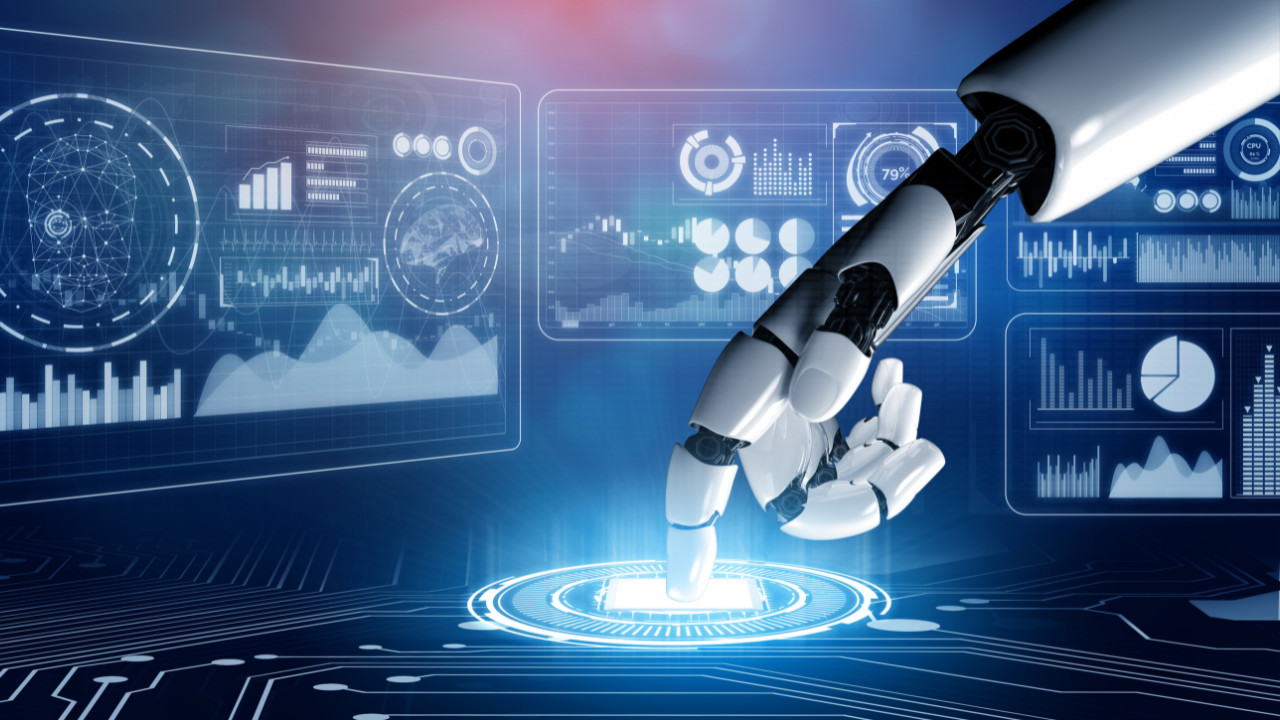
Beyond the three main pillars, some algorithms combine methodologies to solve more nuanced problems, notably Semi-Supervised Learning.
A. Bridging the Gap
Semi-Supervised Learning is used when you have a large amount of unlabeled data but only a small portion of labeled data.
A. Cost Efficiency: Labeling data, especially for huge datasets, can be extremely time-consuming and expensive for human experts.
B. Leveraging Unlabeled Data: This approach uses the small labeled set to guide the initial learning process, and then uses the vast unlabeled set to further understand the data’s structure and refine the model’s accuracy.
C. Typical Use: Often used in image or speech recognition where large volumes of raw data are easily collected, but only a fraction can be manually labeled.
Machine Learning in Action: Real-World Use Cases
The abstract mathematics behind these algorithms translates directly into powerful, practical solutions used daily across industries.
A. Finance and Fraud Detection
The high-stakes financial sector relies heavily on ML for security and predictive forecasting.
A. Classification Algorithms (like Logistic Regression and SVMs) are trained on labeled historical transaction data to classify new transactions instantly as either “Legitimate” or “Fraudulent.”
B. Unsupervised Clustering is used to identify unusual spending patterns or anomalies in accounts that might indicate a novel form of hacking or money laundering.
C. Regression Models are employed to forecast stock prices, assess the risk of loan defaults, and calculate the overall financial health of borrowers.
B. E-commerce and Personalization
Recommendation engines are the most profitable application of ML in the retail space.
A. Collaborative Filtering (a form of unsupervised learning) groups customers with similar tastes, predicting that if one customer bought product A and product B, and a similar customer bought product A, they are likely to want product B.
B. Classification Algorithms predict whether a specific user is likely to click on a targeted advertisement, optimizing marketing spend.
C. Regression Models are used to dynamically adjust pricing in real-time based on competitor prices, demand, and inventory levels.
C. Healthcare and Diagnostics
ML is accelerating diagnostics and drug discovery, transforming medicine.
A. Classification Algorithms are trained on vast labeled datasets of medical images (MRIs, X-rays) to classify images as containing or not containing signs of disease (e.g., classifying a lesion as cancerous).
B. Clustering is used to group patients with similar symptoms and genetic profiles, which can help researchers identify new subtypes of diseases or unexpected drug side effects.
C. Regression Models predict patient response times to specific drugs or forecast the duration of a hospital stay based on treatment pathways.
D. Robotics and Autonomous Systems
Reinforcement Learning is crucial for creating intelligent agents that can operate independently.
A. RL Algorithms train autonomous vehicles to make complex, sequential driving decisions, prioritizing safety and efficiency in dynamic traffic environments.
B. RL allows robotic arms in manufacturing to learn optimal grasping and assembly techniques through simulated trial-and-error, adapting to slight variations in materials.
C. Classification Models are used in computer vision systems to instantly classify objects (pedestrians, traffic lights, other cars) in the environment, informing the RL agent’s next action.
The Machine Learning Workflow: From Data to Deployment
Regardless of the algorithm chosen, every machine learning project follows a structured process to ensure the model is effective, reliable, and ready for real-world use.
A. Data Collection and Preprocessing
A. Gathering Data: Collect large volumes of high-quality, relevant data tailored to the problem being solved.
B. Cleaning and Preparation: This vital step involves handling missing values, correcting inconsistencies, and converting raw data into a numerical format the algorithm can understand.
C. Feature Engineering: The process of creatively selecting, transforming, and combining raw input variables to create features that enhance the model’s predictive power.
B. Model Selection and Training
A. Selecting the Algorithm: Choosing the most appropriate algorithm (e.g., Linear Regression for price prediction or K-Means for segmentation) based on the task type (regression, classification, clustering) and the nature of the data.
B. Training the Model: Feeding the prepared data (the labeled data in supervised learning) into the algorithm, allowing it to iteratively adjust its internal parameters to minimize prediction errors.
C. Hyperparameter Tuning: Fine-tuning the external configuration settings of the algorithm (like the value of K in K-Nearest Neighbors) to optimize its performance on the specific dataset.
C. Evaluation and Deployment
A. Testing and Validation: Using a portion of the data that the model has never seen during training to rigorously evaluate its accuracy, precision, and ability to generalize to new inputs.
B. Iterative Refinement: If performance metrics are unsatisfactory, the process returns to the data preprocessing or model selection steps for improvement.
C. Deployment: Once validated, the model is integrated into a real-world application (e.g., a website, an app, or an internal business system) where it can begin making live predictions.
D. Continuous Monitoring: Post-deployment, the model is constantly monitored to ensure its performance does not degrade over time due to shifts in real-world data patterns, a phenomenon known as model drift.
Conclusion
Machine learning algorithms are the core vocabulary of modern artificial intelligence.
Understanding the difference between the three main types is essential for tech literacy.
Supervised learning excels at making precise predictions based on labeled historical data.
Unsupervised learning is a powerful tool for discovering hidden structures in unknown data.
Reinforcement learning provides the framework for intelligent decision-making in dynamic environments.
These algorithms are not just theoretical; they are integrated into daily applications around the globe.
From enhancing medical diagnostics to optimizing logistic networks, their impact is immense.
The effective implementation of these tools follows a careful, structured workflow from data to deployment.
Mastering this algorithmic language is the key to unlocking true innovation and competitive advantage.
The future of technology will be built upon increasingly sophisticated learning systems.

